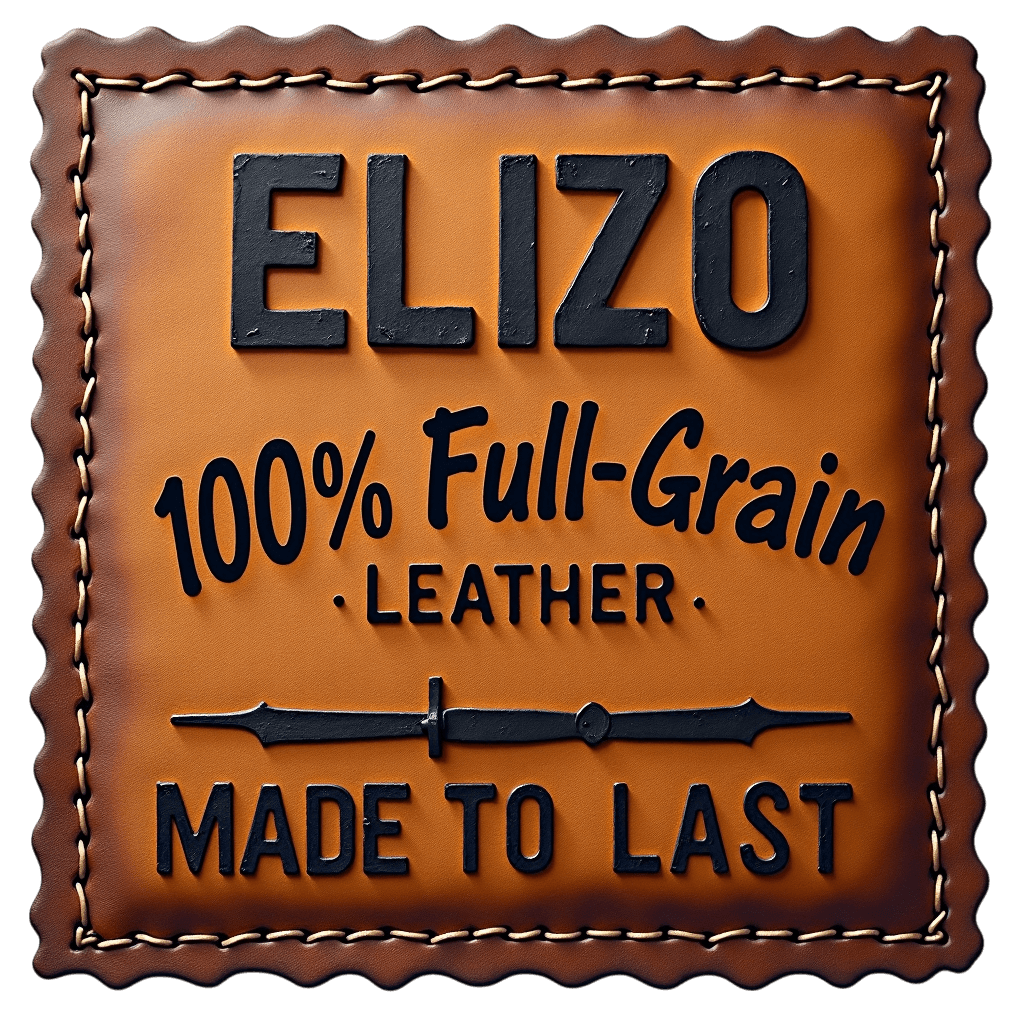Real Leather vs. Fake Leather: Which Is Better?
There is no doubt that leather is one of the most popular textiles in the world. Leather products are everywhere: in clothing like pants and jackets, accessories like bags and shoes, car and furniture upholstery, and other home and office goods. And the demand for leather is growing steadily each year.
To keep up with the increasing leather demand, manufacturers had to develop different materials and find cheaper and faster ways to produce leather. This gave rise to leather alternatives such as faux leather or fake leather. This article will tell you all you need to know about faux leather and how it compares with real leather.
What Is Real Leather?
But first, let's look into real leather and what it means. Real leather is made from the layer of animal hides or skin called the grain. The grain is the premium layer having the highest durability, strength, and water resistance. Real leather develops a beautiful and unique patina due to the reaction of this grain layer to the environment.
The two main types of real leather are full grain leather and top grain leather. Full grain leather is made from the uncorrected grain layer and thus shows the animal skin's unique texture, natural imperfections, and blemishes. In contrast, top grain leather is made from a buffed and corrected grain layer and is, therefore, blemish-free and has a uniform thickness texture.
This article uses the terms real leather, natural leather, grain leather, and authentic leather interchangeably. We tend to avoid using the term 'genuine leather' because manufacturers often use it to market leathers made from the non-grain layer.
Leather made from the non-grain layer comes in different types and names, including genuine leather, split leather, bicast leather, bonded leather, PU-coated leather, and many more. We do not consider this as real leather as they contain plastic coating and other fillers, having more qualities of faux leather than real leather.
What Is Fake Leather?
Fake or faux leather does not come from animal hides or skin. Thus, it is also called vegan leather. Note that vegetable-tanned leather is made by tanning animal skin with plant-derived substances; it is different from vegan leather. Other vegan or faux leather names include synthetic leather, pleather, artificial leather, and imitation leather.
There are also two main types of faux leather depending on the plastic polymer used to make them: polyurethane or PU leather and polyvinylchloride or PVC leather. PU leather has a soft yet durable finish, making it ideal for making clothes, shoes, and sporting goods like soccer balls. PVC leather is the common faux leather used for car seats and furniture items because it is cheaper and can stand more wear and tear than PU leather.
Manufacturing Real Leather vs. Faux Leather
The making of real leather is more complicated than that of faux leather. Natural leather must undergo a process called tanning which consists of a series of steps and complex methods before it becomes an authentic leather of high value. Making faux leather only involves a few steps and minimal time to synthesize and produce.
Leather tanning and production require more resources, skilled labor, and time to produce high-quality real leather. Fake leather only needs base materials and plastic polymers, which can be bonded together quickly using machines and automated processes.
Authentic leather pieces don't look exactly the same because no two animal hides are the same or react the same to the leathermaking process. And each leathermaker or artisan has their own unique process that they follow or modify according to their raw materials and other factors. Faux or vegan leather, in contrast, is made with standard methods that ensure uniform and perfectly made leather products.
Comparing Real And Faux Leather
The following sections explain how real leather compares against faux leather with respect to common essential criteria.
Cost
Authentic leather costs more because making it is costly. But for some, investing in real leather is cost-effective because it is long-lasting and even increases in quality and value over time.
Faux leather is cheap because it's quick and cheap to make. Most people love to own leather items in trendy colors, shapes, and sizes, so buying faux leather will give you more quantity for your money. Good quality synthetic leather can last long enough for you to enjoy its trendy qualities, sometimes even longer.
Cleaning & Maintenance
Real leather is difficult to clean, easy to stain, and sensitive to water and cleaning chemicals. It also needs regular maintenance and conditioning to achieve the highest possible durability and style. Improper cleaning and maintenance of real leather can easily lead to irreversible damage.
Fake or faux leather is easier to care for and clean, but they still need regular attention. Wiping it down with a damp cloth is enough for daily cleaning. Weekly vacuuming once a week and cleaning with a mild soap should be enough to maintain the shine and color of your faux leather furniture or accessory.
Durability & Strength
Real leathers are valued for their durability and strength, and there's no question that it has the best advantage over fake leather when it comes to longevity. The natural fibers in real leather prevent it from cracking, peeling, or tearing. Real leather is also scratch, scuff, and fade resistant if maintained and conditioned properly.
Well-made faux leather can last long enough for you to get more than your money's worth. But if you're looking for an heirloom piece that will last longer than a lifetime, real leather from top grain or full grain is the only way to go.
Comfort & Style
The natural fibers that make real leather durable and strong give it the comfort and style you want for your clothes, furniture, or car interiors. Real leather has tiny pores that make it breathable and comfortable against your skin. Real grain leather also has air pockets that trap and delay heat from going out of your body, helping insulate you during cold weather.
Faux leather is also an excellent insulator, but its tightly laminated plastic polymers are not breathable. Wearing faux leather against your bare skin will get uncomfortable very quickly. Fake leather also looks, well, fake. And this can deduct major points from your style.
Touch & Smell
The looks of a leather item can deceive because the real leather texture is easy to replicate or imitate. Touching and smelling is the easiest way to tell real and faux leather apart.
Touching the surface of real leather will let you feel the minor imperfections and natural variations of real leather. Real leather should have a 'pull,' meaning it should wrinkle, stretch, or change color slightly as you touch it. Faux leather is uniformly colored and has consistent texture and patterns.
Real leather smells earthy, musky, woody, and natural due to the combination of tanning substances, dyes, oils, and waxes used to make it. Fake leather smells of plastic or chemicals, which can be difficult to remove or ignore.
Environmental Impact Of Real Leather vs. Faux Leather
The debate on whether real leather is more eco-friendly than fake leather is far from settled and is more relevant than ever. Each of these leather types has a claim to be sustainable. But if you look closely, both have a similar degree of environmental impact, albeit in different ways.
Both real and faux leather production contribute to pollution and the release of toxic chemicals into the environment. The tanning of real leathers releases pollutants and toxic chemicals, including carcinogens that endanger the health and lives of humans, animals, and other living things. Faux leathers are major contributors to the build-up of plastic wastes in the environment, being made of plastics that do not degrade quickly and are known to release cancer-causing toxic chemicals like dioxin and phthalates.
Both types of leather also have a large carbon footprint, meaning they are involved in releasing large amounts of gases like CO2 that ultimately result in global warming. Real leather's footprint comes from it being a by-product of the meat industry, a major CO2-releasing industry, and the fact that processing animal hides into leather takes a lot of resources. Faux leather needs fewer resources to make, but it comes from plastics derived from fossil fuels: a non-renewable and already depleted resource, the use of which is considered the primary source of our current environmental problems.
Although not by a lot, real leather is better than faux leather because it is durable and does not need constant production and replacement. Also, real leather is natural and can degrade and decompose, while faux leathers take up to hundreds of years to degrade. But then again, all these do not matter if you are vegan and are firmly against animal cruelty.
Tough Match!
The fight between real leather and fake leather is a tough match. Both are useful in different situations, and they have their respective pros and cons.
In the end, choosing which leather type to buy is still a job that you must do alone. But we hope this article has equipped you with the knowledge to do this job right.
If you want to learn more about leather types, textures, and appearances, check out our related article here* [*Add link to leather texture article]. Visit our shop here*[*Add link to shop here] to experience real leather products at a reasonable price.
Please don't forget to leave your comments and questions below. We hope to hear from you soon!


